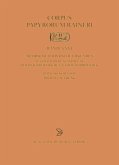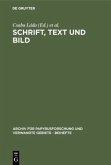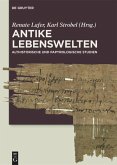Volume 19 of the series "Berliner Griechische Urkunden" (BGU) contains papyrus documents exclusively from Hermupolis, as did volumes 12 and 17. Of the 80 texts in the new volume, 76 are here published for the first time, while four are revised re-editions. They cover a time-span from the middle of the first century B.C. to the beginning of the 7th century A.D., with the majority of the texts dating from the 4th to the 6th century. beginning with a fourth-century petition to the Emperor with a request for the restitution of a dowry (the only document in Latin), followed by other official texts, such as petitions and other documents either addressed to or issued by the authorities. The second part of this volume contains private documents, such as contracts of lease, sale, loan etc. These texts provide a large amount of new information on details; taken together, however, they also offer a vivid picture of the social and economic life in an important provincial capital of Graeco-Roman Egypt.
Der 19. Band der "Berliner Griechischen Urkunden" (BGU) enthält, wie schon die Bände 12 und 17, ausschließlich Papyrusurkunden aus Hermupolis. Der neue Band umfasst 80 Texte, von denen 76 hier erstmals publiziert werden; vier sind revidierte Editionen. Der zeitliche Rahmen reicht von der Mitte des 1. Jahrhunderts v. Chr. bis zum Beginn des 7. Jahrhunderts n. Chr., wobei die Mehrzahl der Texte der Zeit vom 4. bis zum 6. Jh. angehören. Den Anfang macht die einzige lateinisch geschriebene Urkunde, eine Eingabe an den Kaiser mit der Forderung nach Rückgabe einer Mitgift (4. Jh.). Es folgen weitere Urkunden amtlicher Natur (Eingaben) und andere an Behörden gerichtete oder von diesen ausgestellte Urkunden. Den zweiten Teil des Bandes bilden Privaturkunden (Pacht, Verkauf, Darlehen usw.). Die Texte bieten eine Fülle neuer Einzelinformationen, aber in ihrer Gesamtheit auch ein lebendiges Bild des gesellschaftlichen und wirtschaftlichen Lebens in einer bedeutenden Provinzmetropole desgriechisch-römischen Ägypten.
Der 19. Band der "Berliner Griechischen Urkunden" (BGU) enthält, wie schon die Bände 12 und 17, ausschließlich Papyrusurkunden aus Hermupolis. Der neue Band umfasst 80 Texte, von denen 76 hier erstmals publiziert werden; vier sind revidierte Editionen. Der zeitliche Rahmen reicht von der Mitte des 1. Jahrhunderts v. Chr. bis zum Beginn des 7. Jahrhunderts n. Chr., wobei die Mehrzahl der Texte der Zeit vom 4. bis zum 6. Jh. angehören. Den Anfang macht die einzige lateinisch geschriebene Urkunde, eine Eingabe an den Kaiser mit der Forderung nach Rückgabe einer Mitgift (4. Jh.). Es folgen weitere Urkunden amtlicher Natur (Eingaben) und andere an Behörden gerichtete oder von diesen ausgestellte Urkunden. Den zweiten Teil des Bandes bilden Privaturkunden (Pacht, Verkauf, Darlehen usw.). Die Texte bieten eine Fülle neuer Einzelinformationen, aber in ihrer Gesamtheit auch ein lebendiges Bild des gesellschaftlichen und wirtschaftlichen Lebens in einer bedeutenden Provinzmetropole desgriechisch-römischen Ägypten.








